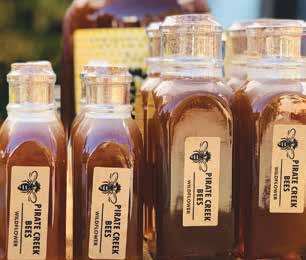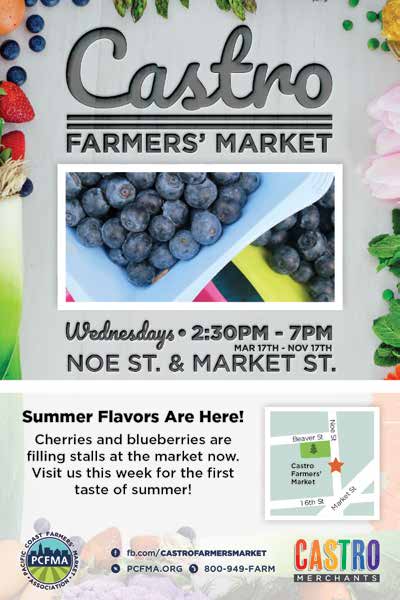By Debra Morris–

A spoonful of wildflower honey on a warm biscuit, a dollop of clover honey in your tea, and a drizzle of blueberry honey in salad dressings are made possible because of honey bees. These hardworking insects are responsible for pollinating most fruits, vegetables, legumes and more. To produce a pound of honey, bees must visit some 2 million flowers. Those floral blossoms help create more than 300 varieties of honey ranging from clover and sage to blueberry and buckwheat. There are many myths and misconceptions surrounding honey and honey and honeybees.
All honey you buy is pure honey.
Not true. Honey fraud is quite common. Some honey you buy at the grocery store has been adulterated with high fructose corn syrup or other sweeteners, or has been watered down. In April of 2014, the FDA ruled that any honey that was adulterated by the addition of sugar or corn syrup could not be labeled as “pure honey” but would have to label it as a “blend.” You can count on honey from your farmers’ market to be pure local honey. The beekeepers at your farmers’ market do not add anything to their honey and stand by its purity.
Crystallized honey has gone bad.
Crystallization, or granulation, of honey is the natural process of honey preserving itself. Typically, honey contains natural sugars and around 20% water. Because this is saturated, the glucose may separate from the water and form crystals. However, the honey is largely unchanged and remains just as tasty. An easy way to de-crystalize it is to remove the lid and microwave for 20 to 30 seconds.
White foam on honey means it is not fresh.
The white “foam” that appears at the top of honey is simply air. This “foam” is a result of tiny air bubbles in the honey escaping to the top of the bottle.
All species of bees produce honey.
Only 5% of the 20,000 species of bees in the world produce edible honey. Most bees only produce enough honey for their own survival, but not enough to harvest it for human usage.
Filtered honey is not as authentic as raw unfiltered.
Raw honey comes straight from the honeycomb. The beekeeper filters the honey just enough to remove small bits of pollen and beeswax. Filtered, or pasteurized, honey is clear and smooth. The pasteurization process (adding high heat) increases its shelf-life and kills yeast cells that can affect the taste of the honey, but it is still pure honey.
It’s ok to give babies honey.
Honey should never be fed to infants under one year of age because their digestive tract has not developed enough to fight off honey’s natural bacteria. Honey is otherwise a safe and wholesome food for older children and adults.
You’ll find only pure, unadulterated local honey at your Castro Farmers’ Market from Pirate Creek Bees who harvests the honey from bees roaming the fields and hills in the Sunol area. Brothers Mike and Jim Garcia have hives in locations that are full of flowers for bees to forage year-round and that are vital to the strength and health of their bees. They wanted to do more to help the dwindling bee population in the area and help the various native plant species around their ranch so they began operating several bee yards. They grew up in the East Bay and come from a family of cattle ranchers who have been in the area since the mid-1860s. Their bees make a most delicious and diverse honey. You won’t find better quality, purity, or variety than at your local farmers’ market where you can trust the farmer who harvested it.

Pain Perdu with Berries and Honey
Have you ever wondered what the French call French toast? “Pain Perdu” means lost bread, but you won’t lose any points dishing up French toast with fresh berries for breakfast!
Finely chop and toast almonds. Spread evenly on a plate. Whisk together eggs, milk, honey, vanilla, and salt. Put this mixture into a deep plate and add one slice of bread to soak up the mixture. Flip the bread to evenly coat with liquid. Dredge one side of the bread in the toasted almonds. Heat a pan to medium and add one pat of butter. Cook one side of toast till golden brown, flip, and repeat. Once the second side is golden brown, push on the toast to see if any of the liquid is still present. If still wet, finish in the oven at 350°F for 5 minutes.
Cover with fresh berries and dust with powdered sugar. Drizzle with honey, maple syrup, or if you are lucky enough to have some, Alpine Blue Farms apricot sauce!
Debra Morris is a spokesperson for the Pacific Coast Farmers’ Market Association (PCFMA). Check out the PCFMA website for recipes, information about farmers’ markets throughout the region and for much more: https://www.pcfma.org/
Published on May 6, 2021
Recent Comments